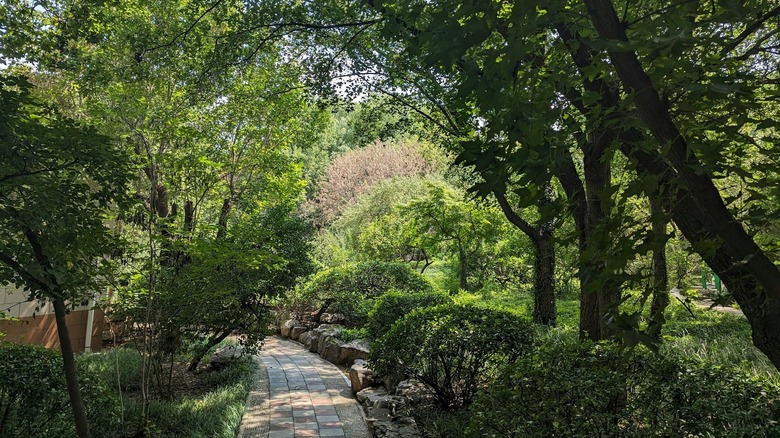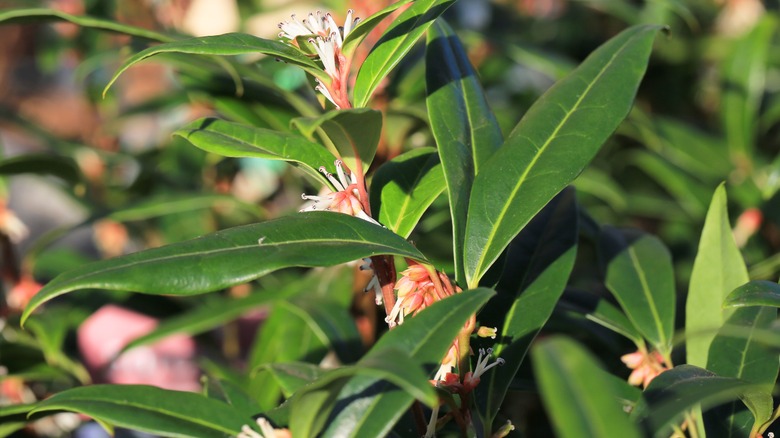The Winter Flowering Ground Cover That's Great For Shady Areas Of Your Yard
In winter, you have to be a little extra creative and hunt for plant species that will continue to thrive and even add some floral color, especially if you have shady areas in your yard. But don't worry, because there's one winter flowering ground cover that can easily brighten up those shaded spots during the colder months of the year. Dwarf sweetbox (Sarcococca hookeriana var. humilis) is one plant that doesn't shy away from the cold weather and will add a spot of color and fragrance to your yard. After all, it's native to western China, so it's quite used to chilly days and nights. Plus, it's one of those evergreen ground covers for stunning color all year round.
Dwarf sweetbox, also commonly known as Himalayan Sarcococca or Himalayan sweet box, can be grown in USDA Hardiness zones 6 through 9. What makes it so tough are its large glossy, leathery leaves which are dark green in color. This deeply-hued foliage is also a good indication this variety can be grown in the shade, and that is certainly its preferred position. In late winter and early spring, small white flowers appear amidst the leaves. These are sweetly scented and quite different because they don't have any petals. The plant has both male and female flowers, with the male ones showing pink anthers. Shiny black berries appear after the female blooms fade away to add a bit more interest to the garden.
How to grow dwarf sweetbox in your winter garden
Since this ground cover appreciates growing in the shade, it's perfect for planting under trees in a woodland garden. Even in deep shade, this variety will flourish and grow. Although it can handle some sun exposure, you'll find that the leaves lose their glossy sheen in bright light and may become discolored. The soil should be relatively moist but well-draining and on the acidic side.
Gardeners who have deer and other wildlife visiting their yard will be happy to know this ground cover shrub is both deer and rabbit-resistant. It's also not usually bothered by other garden pests. Basically, if you're looking for a tough plant that will thrive without too much attention, it's well worth growing this species. In fact, it's one flowering low-growing shrub that will make your yard smell amazing. The only recommended maintenance is to prune it in spring after it's finished flowering. This will help to maintain a more compact growth habit. When doing this, bear in mind that in contrast to the sweet fragrance of the flowers, any bruised stems will give off a rather unpleasant odor. So, you might want to select a different kind of plant to add a pop of green to your outdoor patio steps so you won't have to worry about accidentally treading on the stems.

